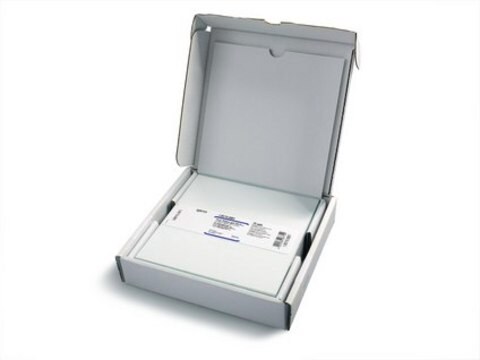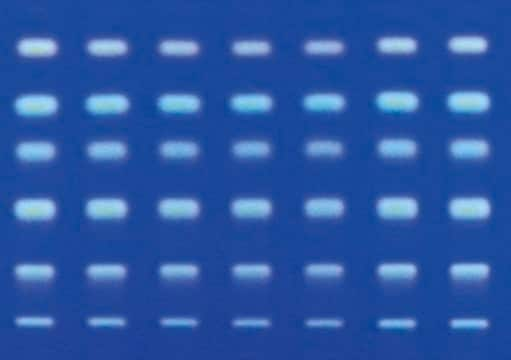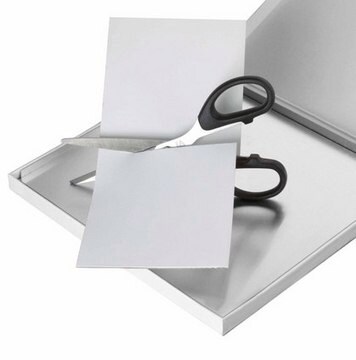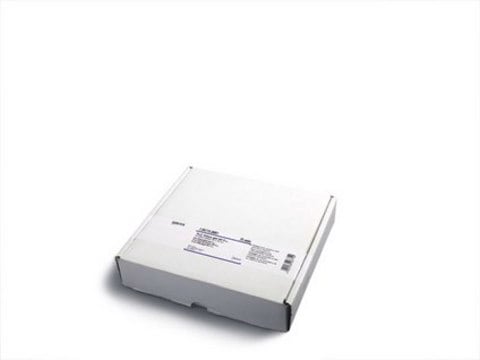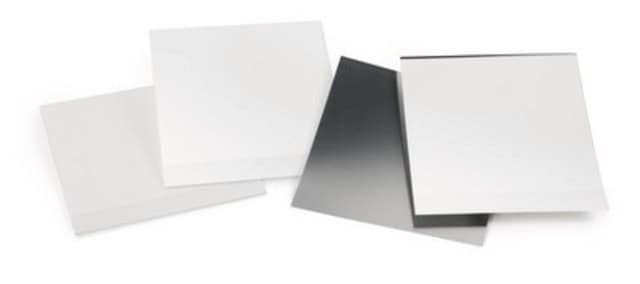1.15326
TLC plates, Silica gel 60
pkg of 100 plates, plate L × W 2.5 cm × 7.5 cm, glass support
Synonyme(s) :
Silica Gel 60 TLC Plates
About This Item
Produits recommandés
Matériaux
glass support
silica gel 60 matrix
Niveau de qualité
Caractéristiques
binder Organic Polymer
fluorescent indicator: no
Conditionnement
pkg of 100 plates
Technique(s)
thin layer chromatography (TLC): suitable
Épaisseur de la couche
250 μm
Plaque/Plateau, L × l
2.5 cm × 7.5 cm
Taille des particules
10-12 μm
Dimension de pores
60 Å medium pore diameter
Température de stockage
2-30°C
Description générale
Application
- Protein-Polymer Conjugates Synthesized Using Water-Soluble Azlactone-Functionalized Polymers: Highlighting the versatility of triethylene glycol monomethyl ether in polymer synthesis, this research develops conjugates for receptor-specific cellular uptake, crucial for targeted drug delivery systems (Kim et al., 2019).
- Hydrogen-bonded six-component assembly for capsule formation: Utilizing triethylene glycol monomethyl ether, this study creates complex capsule structures with applications in material science, particularly for photoresponsive systems (Togari et al., 2018).
- An ultra-small thermosensitive nanocomposite with a Mo(154)-core: This research incorporates triethylene glycol monomethyl ether in the development of a comprehensive platform for NIR-triggered photothermal-chemotherapy, marking a significant advancement in cancer treatment technologies (Zhang et al., 2018).
- Synthesis of Polyester Dendritic Scaffolds for Biomedical Applications: Featuring triethylene glycol monomethyl ether, this article explores its use in the synthesis of polyester dendritic scaffolds, enhancing biomedical applications such as tissue engineering and regenerative medicine (Sadowski et al., 2016).
Liaison
Remarque sur l'analyse
Pore volume (N₂-isotherm): 0.74 - 0.84 ml/g
d 50 (laser diffraction, size distribution): 9.7 - 11.7 µm
Layer thickness: 210 - 270 µm
Deviation of layer thickness per plate: ≤ 35 µm
Chromatographic testing:
colour test
hRf-values
- bleu vif organol, colour test, lipophile:
11 - 25
- Ceres Black G, colour test, lipophile: 34 - 48
- ceres Violet brn, colour test, lipophile: 52 - 67
separation number (colourtest, lipophile): ≥ 9.0
Typical value determined on a conditioned plate
Eluent: toluene (45% rel. humidity)
Certificats d'analyse (COA)
Recherchez un Certificats d'analyse (COA) en saisissant le numéro de lot du produit. Les numéros de lot figurent sur l'étiquette du produit après les mots "Lot" ou "Batch".
Déjà en possession de ce produit ?
Retrouvez la documentation relative aux produits que vous avez récemment achetés dans la Bibliothèque de documents.
Les clients ont également consulté
Notre équipe de scientifiques dispose d'une expérience dans tous les secteurs de la recherche, notamment en sciences de la vie, science des matériaux, synthèse chimique, chromatographie, analyse et dans de nombreux autres domaines..
Contacter notre Service technique